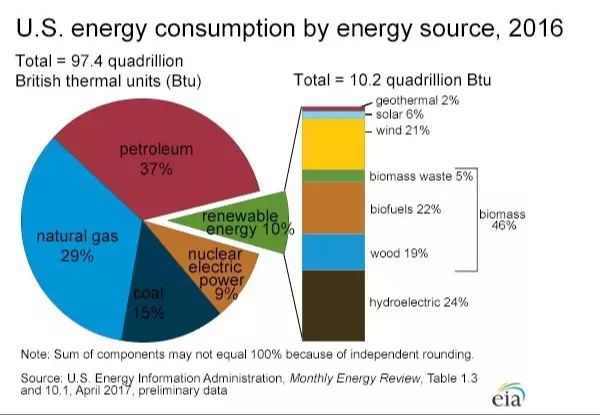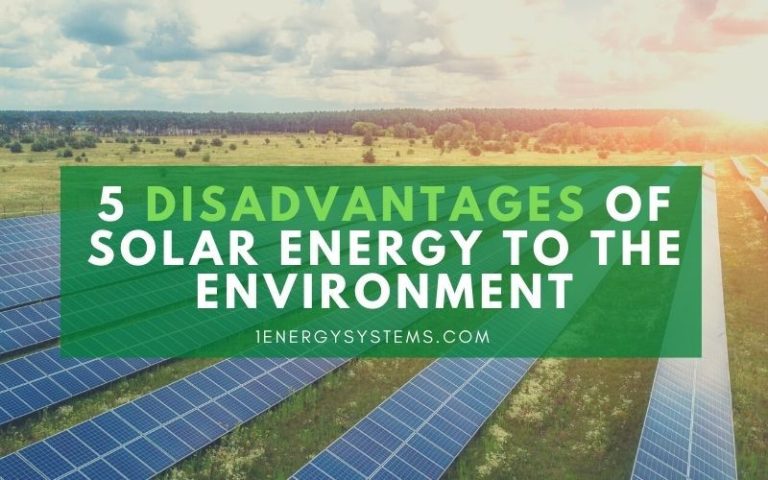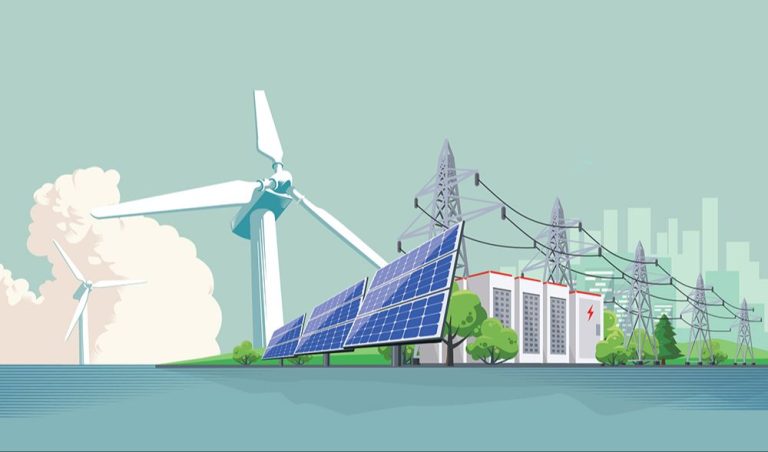What Is The Most Popular Alternative Energy Source?

Alternative energy sources refer to renewable energy sources that provide an alternative to conventional fossil fuels. These renewable sources include solar, wind, hydropower, geothermal, and bioenergy. Alternative energy sources are important for several reasons:
- They are renewable, meaning they won’t run out like fossil fuels.
- They produce little to no greenhouse gas emissions that contribute to climate change.
- They allow countries to rely less on imported fossil fuels and improve energy security.
- In many cases, they are becoming cost-competitive with conventional sources.
With rising concerns about climate change and energy security, there has been increasing interest and investment in alternative energy sources. But which of these renewable sources is emerging as the most popular? This article will provide an overview of the major alternative energy sources and discuss which one is gaining the most traction.
Solar Power
Solar power has emerged as one of the fastest-growing renewable energy sources worldwide. It harnesses energy from the sun and converts it into electricity using photovoltaic cells. Some key facts about solar power:
Solar energy works by absorbing photons from sunlight and converting them into electricity through solar panels. Solar panels can be installed on rooftops or ground-mounted over large areas to generate electricity. According to the Solar Energy Industries Association (SEIA), in the past decade, solar has experienced an average annual growth rate of 24%. The SEIA projects solar installations to quadruple over the next 10 years as costs continue to fall and more homes and businesses adopt solar (https://www.seia.org/solar-industry-research-data).
The costs of solar have dropped dramatically in the past decade, with panel costs declining 90% since 2009. The levelized cost of solar electricity has become cheaper than new coal and gas in most major markets. Residential solar system costs in 2021 averaged around $2.69 per watt, down from $6 per watt in 2010 (https://www.ecowatch.com/solar-energy-statistics.html).
In 2021, solar made up over 40% of all new electricity capacity added in the U.S., with 23.6 GW installed that year alone. Total U.S. solar capacity is currently over 120 GW, generating enough electricity to power 23 million homes. Market analysts project U.S. solar installations will grow 17% annually over the next 5 years as costs fall further (https://www.marketwatch.com/guides/solar/solar-energy-statistics/).
Wind Power
Wind power is one of the fastest growing sources of renewable energy in the world. Wind turbines use large blades to capture the wind’s kinetic energy and convert it into electricity. According to the IEA, wind electricity generation reached over 2,100 TWh in 2022, a 14% increase from the previous year IEA. This was the second highest growth on record for wind power.
As of 2022, wind power accounted for 10.1% of total electricity generation in the United States and continues to expand American Clean Power. The average size of wind turbines in the US also grew to 3.0 MW in 2021, an 18% increase over the previous 5 years UM Center for Sustainable Systems. Globally, wind capacity has grown at an average annual rate of 12% from 2012 to 2022.
Wind power is one of the most cost-competitive sources of renewable energy. Costs have declined dramatically in recent decades thanks to technology improvements. Wind turbines operate at a low marginal cost once installed, and the fuel (wind) is free. Overall, wind power offers a sustainable, renewable way to generate electricity with minimal environmental impact.
Hydropower
Hydropower is the process of using falling or fast-flowing water to generate electricity. It relies on high-head dams that create large reservoirs, or run-of-river projects that harness the energy from rivers or waterfalls without dams. Hydropower is a mature technology that has provided renewable electricity for over a century.
According to the International Hydropower Association (IHA), hydropower meets over 60% of renewable electricity production globally, generating around 16% of the world’s total electricity production (Facts about Hydropower, IHA). In 2019, global hydropower capacity reached 1,308 GW and is expected to grow around 3% annually to meet climate goals (IEA).
The average cost of installing hydropower capacity is around $2,881 per kW, making it one of the cheapest renewable energy sources. While investment costs are site specific, hydropower often has low operation and maintenance costs compared to other renewables (Statista).
Geothermal
Geothermal energy is thermal energy generated and stored in the Earth. It arises from the decay of naturally radioactive material, the energy of formation of the planet, and absorption of sunlight (1). Geothermal energy is harnessed by tapping into pockets of steam or hot water below the Earth’s surface (2). Wells are drilled into underground reservoirs to bring the steam and hot water to the surface. The steam rotates a turbine that activates a generator, which produces electricity.
The United States is the world’s largest producer of geothermal electricity (3). In 2019, geothermal energy provided about 0.4% of total U.S. utility-scale electricity generation (2). While geothermal energy accounts for a small portion of U.S. renewable electricity generation, there is significant potential for growth. The U.S. Geological Survey estimates that identified geothermal resources could provide as much as 16,000 MW of power (4).
Some of the key advantages of geothermal energy are that it provides constant and reliable baseload power with a small footprint and low emissions. However, geothermal power plants are restricted to areas with sufficient geothermal energy and have high upfront costs. Overall, as technology improves, geothermal may play a greater role in the renewable energy mix.
Sources:
- Geothermal Energy Factsheet | Center for Sustainable Systems
- Geothermal explained: Use of geothermal energy
- Geothermal Energy – Worldwide | Statista Market Forecast
Bioenergy
Bioenergy is renewable energy made from biomass or organic matter. Common sources of bioenergy include wood, energy crops like corn and sugarcane, agricultural waste, and municipal solid waste. There are several ways bioenergy can be converted into useful energy:
Biofuels: Biomass can be processed into liquid fuels like ethanol and biodiesel for transportation.
According to the U.S. Department of Agriculture, U.S. ethanol production totaled about 15.4 billion gallons in 2022, while biodiesel and renewable diesel production reached 3.1 billion gallons (U.S. Bioenergy Statistics). Global biofuel production has grown substantially in recent decades.
Biopower: Organic matter can be burned directly for heat or to generate electricity.
Biogas: Bacteria break down organic matter in the absence of oxygen producing a gas mixture called biogas, which can be burned for energy.
According to the International Energy Agency, bioenergy accounted for 55% of global renewable energy and over 6% of total energy supply in 2021, making it the largest source of renewable energy today (IEA). While growth has slowed in the last decade, bioenergy capacity still increased at an annual rate of around 1% and reached 143,371 megawatts globally as of 2021 (Statista).
The main advantage of bioenergy is its ability to provide renewable energy from readily available organic matter. It can also contribute to waste management and rural development. However, large-scale bioenergy production raises sustainability concerns around land use, food security, and lifecycle greenhouse gas emissions.
Comparisons
When comparing different alternative energy sources, it’s important to look at various factors like growth, costs, and scale. According to a report by the World Energy Council (See here), renewable energy sources like solar, wind, and hydropower have seen rapid growth in recent years as costs have declined. In 2020, solar and wind power accounted for over 50% of new power generation capacity added globally.
However, hydropower and geothermal remain the largest sources of renewable electricity generation worldwide thanks to their scalability and affordability. The levelized cost of electricity from hydropower and geothermal is generally lower than solar and wind. Nuclear also provides low-cost, scalable baseload power, but growth has stagnated in recent decades.
Bioenergy offers versatility as both a power generation source and transportation fuel, but long-term sustainability concerns exist around biomass supplies. Overall, a mix of renewables and nuclear provides the most promising path to honor climate goals according to experts on ResearchGate (See here).
Most Popular
Based on comparisons, solar power is the most widely used alternative energy source. According to https://www.geoengineer.org/news/best-alternatives-for-fossil-fuels, “Solar energy is definitely the most popular alternative energy source from fossil fuels. It was one of the first leading new energy sources to be developed.” Solar power has seen massive growth and adoption over the past decade as costs have fallen dramatically. Countries around the world are investing heavily in solar, with total global capacity exceeding 600 GW as of 2019. The modular nature of solar PV along with improvements in efficiency have made it the go-to choice for both large scale utility projects as well as distributed rooftop installations. With solar panel prices projected to continue falling while efficiency rises, solar is poised to remain the dominant renewable energy source for the foreseeable future.
Future Outlook
Experts project that renewable energy sources will continue to grow in the coming decades. Solar power is expected to see massive growth, with solar capacity projected to expand by over 17 times between 2020 and 2050, according to the International Renewable Energy Agency (source). Wind power capacity is also anticipated to quadruple by 2050 (source). Hydropower will likely expand mainly in developing countries, adding over 20% growth by 2050 according to projections by the International Hydropower Association (source). Geothermal capacity is expected to grow 3-4 times by 2050, especially with enhanced geothermal systems coming online (source). Lastly, bioenergy from sources like biomass, biogas and biofuels is projected to supply 20-25% of global energy demand by 2050 (source).
Conclusion
In summary, the most popular alternative energy source today is solar power. Solar has seen massive growth over the past decade as costs have declined dramatically. With abundant sunlight available across much of the world, solar PV and solar thermal installations have soared. Key advantages of solar include its modularity, easiness to deploy on homes and businesses, and rapidly falling prices. While other sources like wind and hydropower also contribute meaningfully to renewable energy supplies, solar appears poised for further gains as storage technology improves and electric vehicles provide a means of utilizing excess daytime capacity.
Looking ahead, we can expect the share of renewables in the global energy mix to continue rising. This will play a major role in reducing greenhouse gas emissions and mitigating climate change. Solar in particular seems well-positioned for even greater adoption going forward due to its scalability and ease of use. With supportive policies and advancing technologies, solar may soon dominate new power plant installations worldwide.






